Exploring the Karoo’s Wild Flower Trail
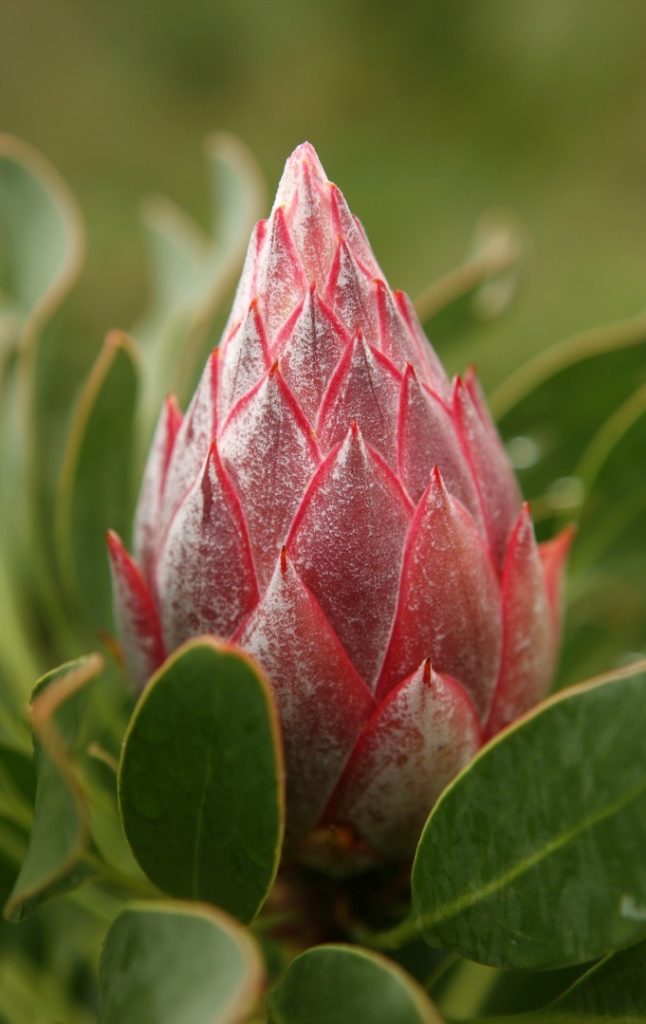
Wild Flower Route Read More The Western Cape’s National Fynbos Wild Flower Route, Touws River 08 January 2024 Located just 2 hours outside of Cape Town, in the Western Cape, lies Touws River, a small yet enchanting town on the fringe of the Great Karoo. While unassuming at first, each Spring, the town transforms in a spectacular display of colour as the Cape’s world-famous Fynbos floral landscapes come alive. A true hidden gem for nature enthusiasts and Western Cape wild flower seekers, Touws River marks the first stop along the National Fynbos Wild Flower Route. Also Read: Join the Western Cape’s Spring Fynbos Wild Flower Hunt in Touws River What is Fynbos? Fynbos is a distinctive vegetation type found in South Africa, characterised by its diverse array of flora, including proteas, ericas, and restios. Touws River (and its surrounding areas) boasts an incredible variety of Fynbos floral species, creating a breathtaking scene every Spring. These resilient flowers and succulent plants have adapted to the region’s semi-desert climate, making this unique landscape a natural wonder for botanists and nature lovers all over the world. The Western Cape Fynbos Wild Flower Route The Fynbos Wild Flower Route is a meandering trail across the Western Cape, beginning in Touws River. The Western Cape’s wild flowers have earned their status as an iconic South African attraction, showcasing the region’s rich floral diversity and endemic fynbos vegetation. The best time to explore the National Wild Flower Route is during the Southern Hemisphere’s Spring months (August to October), when the fynbos flowers burst into a riot of colours, transforming the Klein (Little) Karoo and Western Cape’s vast countryside into a mesmerising floral wonderland. Exploring the Wild Flower Route Touws River Touws River offers several prime locations for flower enthusiasts, including the Huisrivier Pass and surrounding hills, where you can witness the Fynbos in full bloom against the backdrop of the stunning landscape. View More Anysberg Nature Reserve Anysberg Nature Reserve’s vegetation boasts exquisite mountain fynbos with its colourful scrubby appeal and Klein Karoo veld. This means that thorny succulents stand next to proud Proteas, showcasing the true beauty of the South African Karoo countryside. View More Kaggakamma Nature Reserve Just a short drive from Touws River, Kaggakamma Nature Reserve is a must-visit destination for those seeking an immersive Fynbos experience. The reserve is home to an array of indigenous plants, and guided walks provide insights into the unique ecology of the region. View More Matjiesfontein This charming village, steeped in history, is a delightful stop along the Wild Flower Route. Stroll through the streets lined with historic buildings and explore the local flora that graces the surroundings. View More “,”nextArrow”:”“,”autoplay”:false,”autoplaySpeed”:5000,”rtl”:false}’ dir=”ltr”> Karoo 4×4 Trails January 10, 2024 A Lazy 4×4 Trail through the Karoo Nearby Attractions January 8, 2024 Exploring the Karoo’s Wild Flower Trail Nearby Attractions January 5, 2024 Spring Wild Flower Hunt in Touws River
Spring Wild Flower Hunt in Touws River
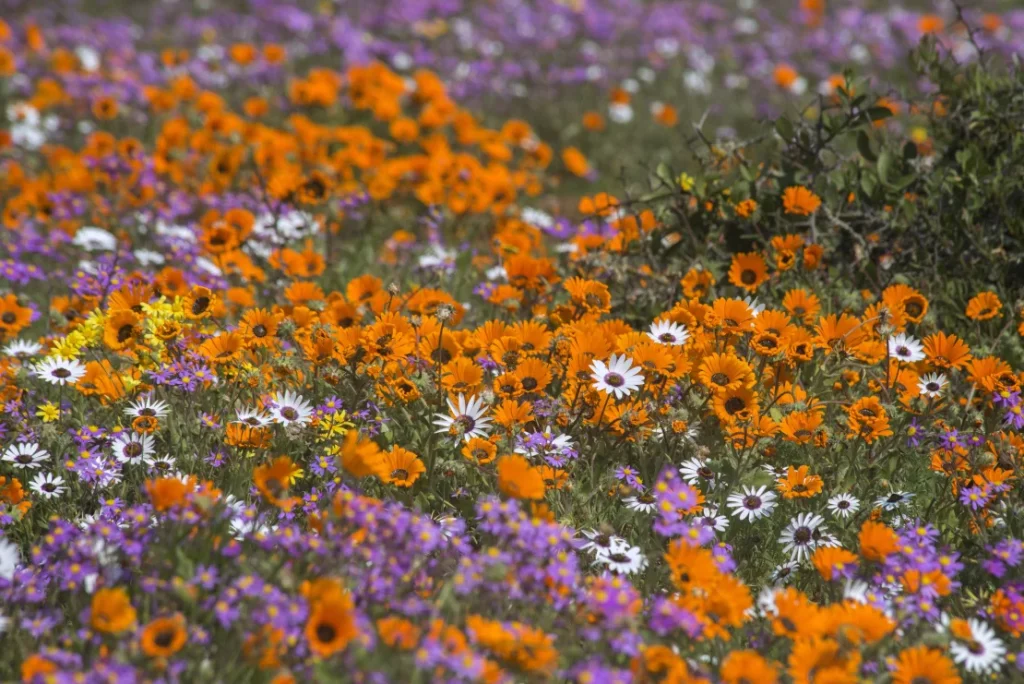
Wild Flower Hunt Read More Spring Wild Flower Hunt in the Karoo, Touws River 05 January 2024 Springtime in Touws River marks the transformation of the natural Karoo landscape into a kaleidoscope of colours and botanical shapes. And, just two hours outside of Cape Town, the Annual Spring Wild Flower Hunt unveils the start of an enchanting journey through the Western Cape’s National Flower Route. Set against the backdrop of the majestic Langeberg and Outeniqua Mountains, the wild flowers in Touws River mark the start of this blossoming adventure through the Tankwa Karoo. Starting the Western Cape Wild Flower Route It’s no surprise that Touws River holds a special place along the Western Cape’s National Flower Route as, every year, the entire area transforms into a canvas of vivid hues and striking floral shapes between July and September. The town marks the official start of the spring flower route, as the Karoo’s wild flowers, succulent Cape fynbos, and rare renosterveld vegetation comes alive, offering locals and travellers a mesmerising display of South Africa’s natural floral beauty. Wild flower seekers and nature enthusiasts are invited to join us in Touws River and its surrounding countryside for the annual Spring Wild Flower Hunt. Touws River Tourism have created a downloadable Wild Flower Checklist, allowing travellers to record their wild flower experience while also aiding participants in identifying and appreciating the intricate diversity of these unique fynbos blooms. Download the Wild Flower Checklist The Touwsrivier Wild Flower Hunt Touws River is strategically situated on the outskirts of the Great Karoo, cradled between the majestic Langeberg and Outeniqua Mountains. This valley serves as a gateway, separating the Little Karoo from the coastal strip of the Garden Route. Despite its proximity to Cape Town, Touws River has maintained its tranquil atmosphere and remote, old-town charms. Perched on the banks of the Touwsrivier, this historic Karoo town promises a serene and picturesque adventure. ‘Touws,’ derived from the Hottentot word for ‘gate,’ aptly describes the town as the gateway to Route 62, also known as the longest wine route in the world. A popular stopover point between Johannesburg, Bloemfontein, and Cape Town, Touws River remains standing as a symbolic doorway to South Africa’s vast and untamed interior landscapes. Also Read: The Western Cape’s National Wild Flower Route, Starting in Touws River Find Them, Tick Them, Please Don’t Pick Them While the allure of these wild flowers is irresistible, we urge all participants to adopt a “find them, tick them, please don’t pick them” approach. Preserving the delicate ecosystem ensures that future generations can continue to enjoy the natural wonders of Touws River’s incredible floral landscape and the Western Cape’s National Flower Route. “,”nextArrow”:”“,”autoplay”:false,”autoplaySpeed”:5000,”rtl”:false}’ dir=”ltr”> Karoo 4×4 Trails January 10, 2024 A Lazy 4×4 Trail through the Karoo Nearby Attractions January 8, 2024 Exploring the Karoo’s Wild Flower Trail Nearby Attractions January 5, 2024 Spring Wild Flower Hunt in Touws River
The Loganda Pillars
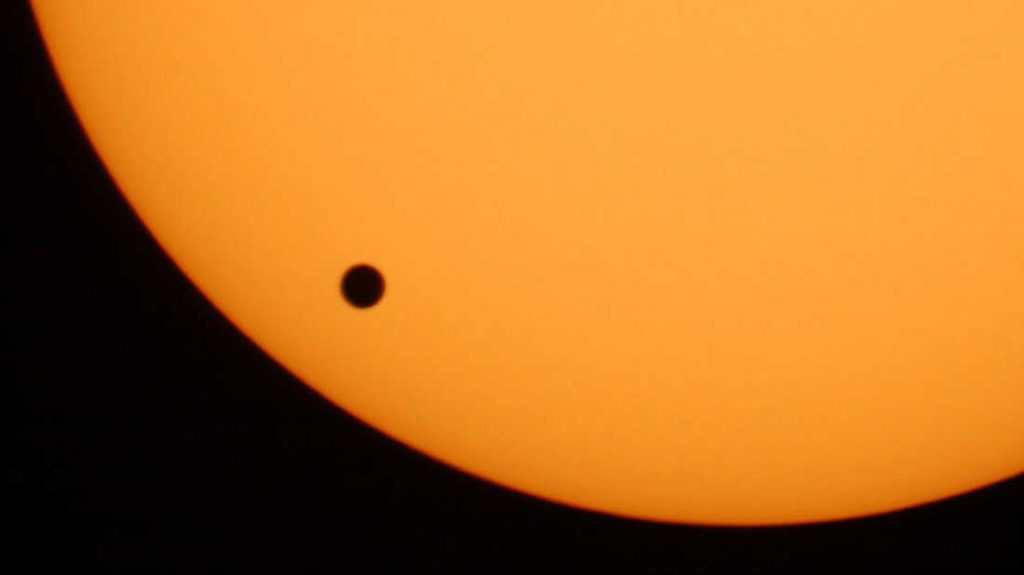
The Loganda Pillars Read More The Loganda Pillars, South Africa’s First Astronomical Monument 03 January 2024 The Loganda Pillars stand as silent sentinels on the edge of South Africa’s vast and untamed Great Karoo. Here, in the small railway town of Touws River, these two concrete pillars are a celestial marvel to all who encounter them. Now weathered by the passage of time, they tell the tale of a forgotten history of astronomical wonder and early scientific advancements—the first of its kind in Southern Africa. Located in what was once a hotel courtyard, one pillar commemorates the site “…where a piece of star once fell” and one bears the handwritten inscription titled: “The Transit of Venus“. Dating back to 1882, the Loganda Pillars mark a pivotal astronomical event and, although unassuming at first, represent a groundbreaking moment in global astronomy. About the Loganda Pillars The origin of the Loganda Pillars traces back to the formation of the Cape Observatory, later known as the Royal Observatory, which played a significant role in solving the solar parallax problem during the 18th and 19th centuries. Some of the most noteworthy planetary transits were observed from the Cape of Good Hope, including the first ever observation of the transit of Venus in 1761 (and the only observation within the South Atlantic region). After the initial disappointment of the 1761 and 1874 observations of the transit of Venus—which produced poor recordings resulting from a lack of adequate equipment, multiple setbacks, and undesirable weather conditions—the British decided to send out astronomical expeditions to seven different countries around the world, with the hope of carrying out timed contact observations, supplemented by heliometer measurements, from various points on Earth. A group of these British astronomers headed for Touws River (Then called Montagu Road), bringing with them all the necessary tools and expertise. And, in the small and remote town of Touws River, six observers independently observed the rare and remarkable event of the transit of Venus on December 6, 1882. Choosing Touws River Touws River was strategically chosen by the British for its clear weather conditions in December, marking the start of Summer in the Southern Hemisphere. The town’s optimal position was ideal for accurately determining the international longitude of the event. Its remote nature, free from light interference, combined with its proximity to Cape Town, also allowed the British astronomers to effectively utilise the telegraph network, which was widely used for communication throughout Sub-Saharan Africa at the time. Also Read: Exploring the Khoisan Bushman Rock Art, a Canvas of History in the Karoo Planetary Transits and the Solar Parallax The significance of planetary transits lies in the measurement of the solar parallax, an angle that determines the distance between the Earth and the Sun. And, determining this angle is achieved by observing planetary transits. When viewed from different locations on Earth, the transits of planets occur at slightly different times, an effect called “parallax”. By recording precisely when the transits either begin, or end, in different places on Earth, astronomers are able to calculate the distance from Earth to the Sun (known as one astronomical unit). This astronomical unit serves as a foundation for calculating distances within the solar system. Indeed, determining the solar parallax was one of the great fundamental millennium problems faced by astronomers. For, not only does the parallax provide us with a measure of distance to the sun, but, by precisely calculating the distance between the sun and the Earth (the astronomical unit), astronomers are also able to determine all other distances in the solar system, unlocking vital insights about our universe and surrounding celestial objects. Understanding the Transit of Venus A transit of Venus across the Sun takes place when the planet Venus passes directly between the Sun and a superior planet, becoming visible against (and hence obscuring a small portion of) the solar disk. During a transit, Venus can be seen from Earth as a small black dot moving across the face of the Sun. Only two inner planets, between the Earth and the Sun, Mercury and Venus, can transit the disk of the Sun and still be observable from Earth. While transits of Mercury are more common (occurring at a rate of 13 to 14 times per 100 years), Venusian transits only occur at a rate of 13 to 14 times per 1000 years. The last transit of Venus was on 5th and 6th of June, 2012, and was the last Venus transit of the 21st century; the prior transit took place on 8th June 2004. The previous pair of transits were in December 1874 and December 1882. The next transits of Venus will be in December 2117 and December 2125. “,”nextArrow”:”“,”autoplay”:false,”autoplaySpeed”:5000,”rtl”:false}’ dir=”ltr”> Karoo 4×4 Trails January 10, 2024 A Lazy 4×4 Trail through the Karoo Nearby Attractions January 8, 2024 Exploring the Karoo’s Wild Flower Trail Nearby Attractions January 5, 2024 Spring Wild Flower Hunt in Touws River
Planting a Tree in Honour of Thembekile Mandela
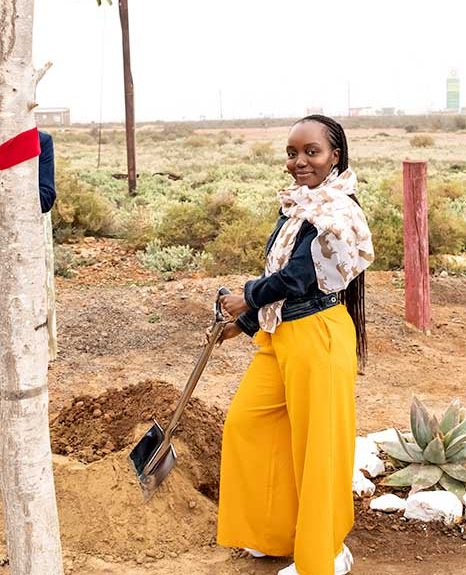
Honouring Thembekile Mandela Read More Planting a Tree in Honour of Madiba Thembekile Mandela 28 December 2023 On a somber Sunday, July 13, 1969, tragedy struck along the N1 in Touws River, claiming the life of Madiba Thembekile Mandela, the eldest son of former South African President Nelson ‘Madiba’ Mandela. Upon his release in 1990, one of Nelson Mandela’s first acts was to visit Touws River, standing at the site where the accident occurred, seeking closure on the loss of his cherished son. In tribute to Nelson Mandela’s visit and in remembrance of Thembekile’s passing, Ndilekha Mandela and Nandi Mandela, Thembekile’s daughters, undertook a meaningful act. They planted a significant symbol of life and resilience—a unique indigenous aloe tree—in front of Loganda Lodge, marking the scene of the accident. Honouring Madiba Thembekile Mandela Madiba Thembekile Mandela, who was named after his father, former South African President Nelson ‘Madiba’ Mandela, passed away on July 13, 1969, in a tragic motor vehicle accident along the N1, in Touws River. As the eldest son of Nelson Mandela, Thembekile Mandela was close to his father, who, at the time of his passing, was imprisoned at Robben Island. While in prison, former President Nelson Mandela was never allowed to attend the burial of Thembekile Mandela, and one of the first things he did after his release in 1990 was to travel to Touws Rivier, to come and stand at the site where the accident occurred, and to try find closure on the death of his beloved son. We know that Nelson Mandela visited the Loganda Hotel (Now Called Loganda Karoo Lodge) when he came to the town in 1990. In tribute to Nelson Mandela’s visit and in remembrance of Thembekile’s passing, Ndilekha Mandela and Nandi Mandela, Thembekile’s daughters, undertook a meaningful act. They planted a significant symbol of life and resilience—a unique and indigenous aloe tree—in front of Loganda Lodge, marking the scene of the accident while paying tribute to their grandfather’s visit (Nelson Mandela) nearly thirty years prior. Planting an Aloe Tree at the Scene of the Accident The decision to plant an aloe tree was deliberate, representing not only Thembekile’s memory but also honouring the four lives lost on that tragic Sunday, July 13, 1969. Special permission from the South African National Roads Agency Limited (SANRAL) was secured to ensure the tree’s placement within the road reserve. While the tree serves as a poignant memorial on the side of the road, SANRAL regulations forbid any stone or wooden monuments, such as the ‘Ukubek ‘iletye’ from taking place in the road reserve—as it could lead to another accident. Therefore, the official stone memorial for Thembekile Mandela now stands solemnly in the Gideon Joubert Memorial Park, in Touwsrivier, South Africa. The aloe tree, planted by Ndilekha and Nandi Mandela, stands as a unique and living tribute. With three heads, it symbolically represents the three families affected by the tragic accident. While details surrounding the incident remain shrouded in mystery, this memorial tree serves as a poignant reminder of the lives lost—Madiba Thembekile Mandela, Christina Klaasen, Irene Simelane, and Angelo Egidio. Also Read: The Symbolism of the Thembekile Mandela Memorial Monument “,”nextArrow”:”“,”autoplay”:false,”autoplaySpeed”:5000,”rtl”:false}’ dir=”ltr”> Uncategorized January 4, 2024 Planting a Tree in Honour of Thembekile Mandela Nearby Attractions January 3, 2024 The Loganda Pillars Nearby Attractions December 27, 2023 The Madiba Thembekile Mandela Monument
The Madiba Thembekile Mandela Monument

The Thembekile Mandela Monument Read More The Symbolism of the Madiba Thembekile Mandela Memorial Monument 27 December 2023 In the heart of Touws River, South Africa, a somber yet profound tribute stands, transcending the passage of time. The Thembekile Mandela Monument, unveiled on 13 July 2019, pays homage to a tragic event etched in the Mandela family history. Born on 27 December 1945, Madiba Thembekile Mandela’s life was tragically cut short at the age of 23 in a motor vehicle accident in Touws River, along the N1 highway. This solemn structure, crafted from the very stone that stood witness to the accident, marks the untimely passing of Madiba Thembekile Mandela, Nelson Mandela’s eldest son, and others who lost their lives on that fateful Sunday morning, 13 July 1969. Image sourced from www.touwsrivertourism.co.za The Symbolism of the Memorial Stone The stone used for the memorial monument was collected from the site of the accident where Thembekile died on 13 July 1969. The same stone was the only ‘witness’ of what really happened that fateful Sunday morning along the N1. Even former president of South Africa, Nelson Mandela, had many questions about his son’s death—to which no one knew the answers. In a letter to Nolusapho Irene Mkwayi, dated 19 November 1969, former President Nelson Mandela wrote: “How did it happen? Did his car capsize or did it collide with another car? Exactly where did the accident occur? How many people were involved? Was death instantaneous or otherwise?” The memorial Stone also holds deep cultural and emotional symbolism, and stands as a poignant reminder of the life and memory of Madiba Thembekile Mandela, the eldest son of Nelson Mandela. The symbolism of the stone centres on the ideas of endurance, stability, and permanence. Representing the ability to be grounded and connected with the earth, it is important to recognise the symbolic strength and immovable quality of Thembekile’s love and impact for those who knew him. To understand the true significance of the monument, one has to have respect for the Xhosa custom of ‘Ukubek iletye‘, which, directly translated, means “to place a stone”. This traditional Xhosa ceremony is performed after a burial for those who missed the burial of a loved one. The Wish of Former President, Nelson Mandela There is little doubt that former South African president, Nelson Mandela, would have stood at the unveiling of Thembekile Mandela’s memorial monument. Upon receiving news of Thembekile’s tragic passing, on 19 July 1969, Nelson Mandela wrote to the Commanding Officeer of Robben Island to as permission to perform the Ukubek iletye, but his application was turned down. Since then, and until the unveiling of the Thembekile Mandela memorial stone on the 13 July 2019 (exactly 50 years since Thembekile’s passing), Ukubek iletye was never performed. So, for the Mandela Family, and for the people of Touws River, the memorial service performed and the unveiling of the stone monument served as a truly historic and important day. Although Thembekile Mandela is not buried in Touws River, but in Johannesburg, there will always be a part of his spirit that rests at the scene of his passing. It is for this reason that the monument, located near the scene of the accident in The Gideon Joubert Memorial Park, is forever memorialised in the form of a headstone. Also Read: Planting an Aloe Tree in Honour of Madiba Thembekile Mandela https://www.youtube.com/watch?v=bAPsDIJ6t4Y Unveiling the Thembekile Mandela Monument The Madiba Thembekile Mandela Memorial Stone was unveiled on 13 July 2019. The monument commemorates the 50th anniversary of the death of Madiba Thembekile Mandela, Christina Klaassen, Irene Simelane, and Angelo Egidio, who tragically lost their lives in a motor vehicle accident in Touws River, on 13 July 1969. Although there are many statutes across South Africa commemorating former President Nelson Mandela’s contribution to the liberation struggle, there is no other monument anywhere in the world that commemorates former President Mandela’s and the Mandela family’s personal sacrifices and hardships in the pursuit of freedom against Apartheid. Nowhere in South Africa is the personal sacrifice of Nelson Mandela and the Mandela family more evident than here, in Touws River. “,”nextArrow”:”“,”autoplay”:false,”autoplaySpeed”:5000,”rtl”:false}’ dir=”ltr”> Nearby Attractions January 4, 2024 The Madiba Thembekile Mandela Monument Nearby Attractions January 3, 2024 The Loganda Pillars Nearby Attractions December 21, 2023 4×4 Karoo Off-Road Trails near Touws River
Exploring The Great Karoo Grasslands
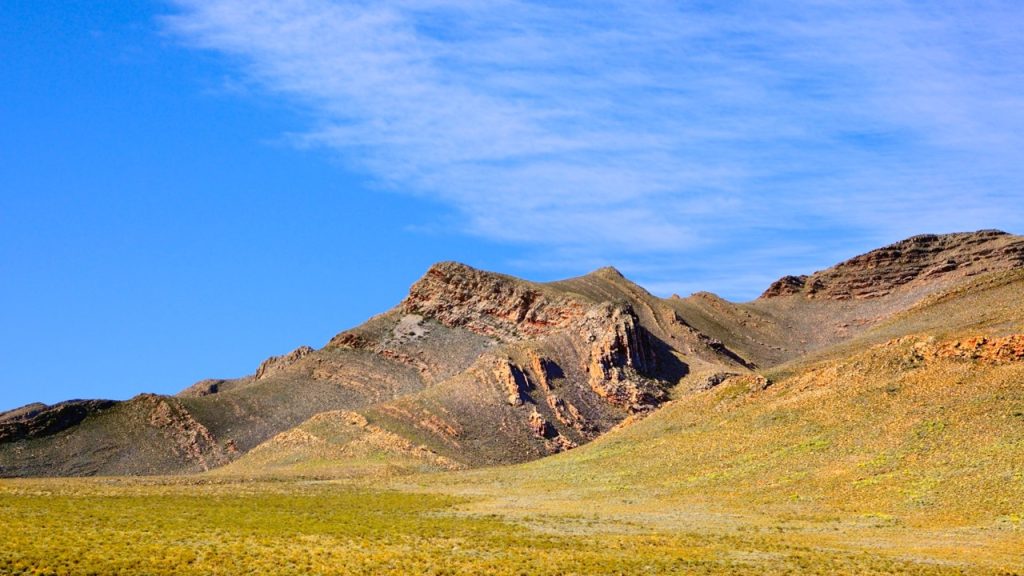
Home About Us Accommodation Gallery Contact Us The Great Karoo Grasslands Read More Explore the Great Karoo Grasslands, an Ever-Changing Canvas of Colour and Life 28 November 2023 Nestled in the heart of South Africa, the Great Karoo Grasslands as a vast and enchanting landscape, waiting to be discovered by those seeking adventure off the beaten path. Stretching across three South African provinces: the Eastern Cape, Western Cape, and Northern Cape, this semi-arid region holds a world of unique beauty and biodiversity—all within the distinctive and fascinating Karoo Grassland Biome. About the Karoo Grasslands The Karoo Grasslands are a remarkable expanse nestled within the heart of South Africa’s rich and expansive interior. Wide plains of grass weave a rich tapestry of biodiversity and cultural heritage into a breathtaking landscape. And within this unique biome, the flora showcasing hardy succulents, resilient shrubs, and endemic grasses that have adapted ingeniously to the semi-arid conditions and harsh Karoo climate. Many wildlife species rely on the Karoo Grasslands, from graceful springboks, majestic kudus, and elusive mountain zebras that roam freely across the undulating terrain. The region also carries a profound historical significance, with small Karoo towns bearing witness to the tales of early Western settlers and nomadic Khoisan herders. Also Read: The Best Karoo Hiking Trails near Touws River Karoo Grassy Shrublands The Karoo is a haven for biodiversity, unfolding its wonders across two distinctive biomes—the vast Nama-Karoo, covering the majority of the area, and a smaller yet significant Grassland Biome. The Grassland Biome, characterised by the Karoo Escarpment Grassland vegetation types, stands out as a vast and impressive landscape within the Great Karoo’s diverse terrains, forming a subset of the Dry Highveld Grassland Bioregion. With Montane Karoo grassy shrublands, Karoo grassy dwarf shrublands, succulent dwarf shrublands, and riparian thickets, the Karoo acts as a sanctuary for over 30% of all recognised endemic plant species in the Nama-Karoo Biome. While the Karoo experiences natural and regular droughts, the delicate grassland ecosystem plays a crucial role in maintaining the balance between the animal population and the available vegetation. Seeds, flowers, various grass and shrub species, and an abundance of insects, help sustain the Karoo’s incredible bird-life and native wild animals. From the smallest of mice to the largest of elephants, the Karoo Grasslands are a knee-high haven stretching for as far as the eye can see.
Khoisan Bushman Rock Art in the Karoo
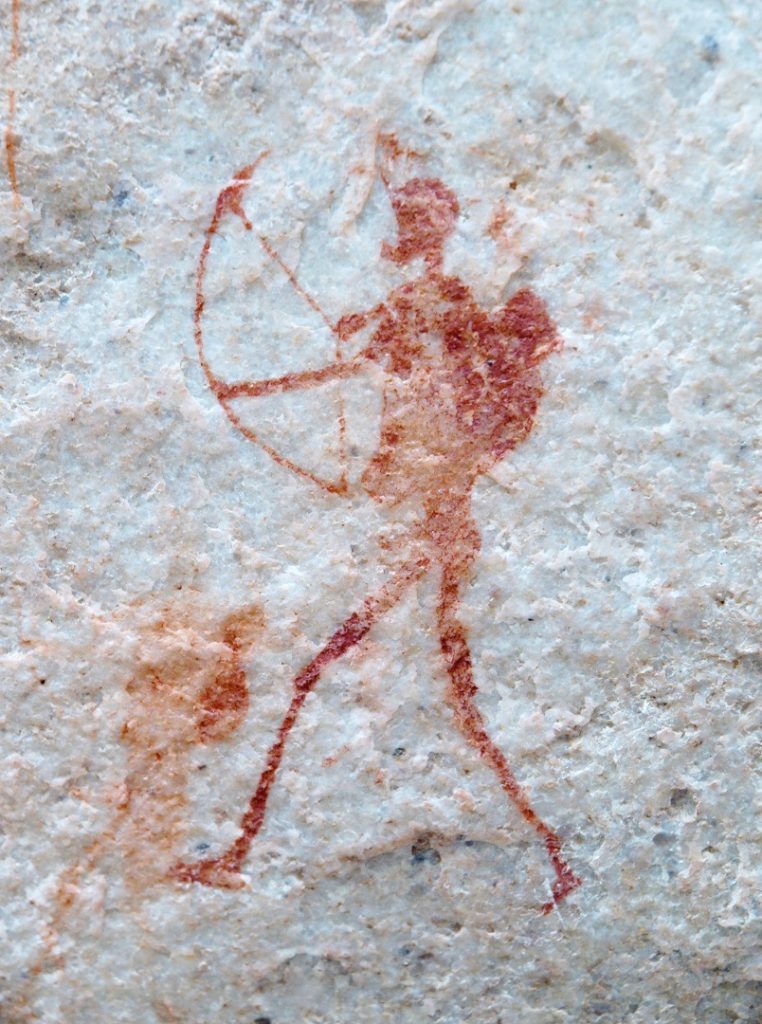
Khoisan Rock Art Read More Khoisan (Bushman) Rock Art in the Great Karoo 20 November 2023 The Great Karoo holds a vast and ancient landscape teeming with life and history. Scattered across rocky outcrops, shallow caves, and weathered boulders, are the paintings and engravings of the Khoisan people. Their unique rock art paintings provide a glimpse into a bygone era, offering a fascinating narrative of the Khoisan way of life. Imagine stepping back in time, long before colonial settlers stepped foot in South Africa. The Karoo teemed with life – antelope herds dotted the golden plains, rhinos lumbered through the scrub, and skilled Khoisan hunters moved in rhythm with the land. It was amidst this ancient lifestyle of survival and spirituality that the Khoisan found their artistic voice, transforming the Karoo rock faces into canvases for their stories and culture. About the Khoisan (Khoi Khoi) Rock Art The Khoisan people, comprising both the San and the Khoi Khoi, have a long and storied history in the Southern African region. The Khoi Khoi, also known as the Khoi, were predominantly pastoralists, skilled in herding livestock and adapting to the diverse landscapes of the Great Karoo. Their rock art, alongside that of the San, contributes significantly to our understanding of the region’s pre-colonial history. The Khoi Khoi were known for their distinctive ways of life, characterised by a deep connection to the land and their herds. The rock art attributed to the Khoi Khoi often portrays scenes of cattle herding, communal rituals, and interactions with the natural environment. These depictions not only showcase their daily activities but also underscore the spiritual significance of the animals and the land in their cultural practices. Khoisan Rock Art wasn’t mere decoration; it was a vibrant tapestry woven with symbols, rituals, and the very essence of their existence. The sun, a giver of life, blazed in ochre glory, while antelope, their sustenance, pranced in elegant lines. Elongated figures, perhaps shamans or ancestors, danced amongst geometric patterns, each stroke imbued with deeper meaning. These ancient masterpieces weren’t merely admired; they were actively engaged with. Rituals and ceremonies danced beneath the painted figures, invoking the spirits and ensuring a harmonious balance with the natural world. Each brushstroke became a prayer, a whispered wish etched into eternity. Also Read: The Best One-Day Hiking Trails near Touws River, South Africa An Ancient Karoo Canvas The rock art found in the Great Karoo spans thousands of years, providing a fascinating timeline of the Khoisan people’s existence. Some of the paintings date back to the Late Stone Age, offering a glimpse into the early societies that thrived in the region. The art evolved over time, mirroring changes in the Khoisan way of life and the introduction of new technologies and cultural influences. Today, the Karoo Rock Art stands as a testament to the resilience and artistry of the Khoisan people. It’s a bridge between past and present, a silent symphony whispering tales of survival, spirituality, and a deep connection to the land. As we stand before these ancient masterpieces, we’re not just admiring art; we’re peering into the soul of a lost civilization, their stories etched in ochre and spirit, forever a part of the Karoo’s timeless embrace.
